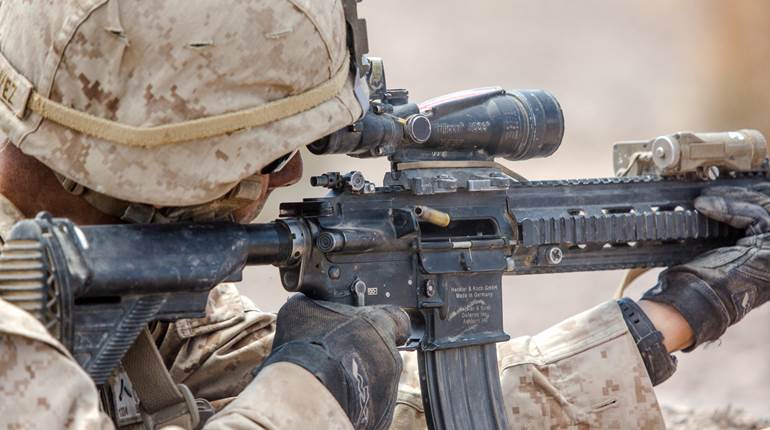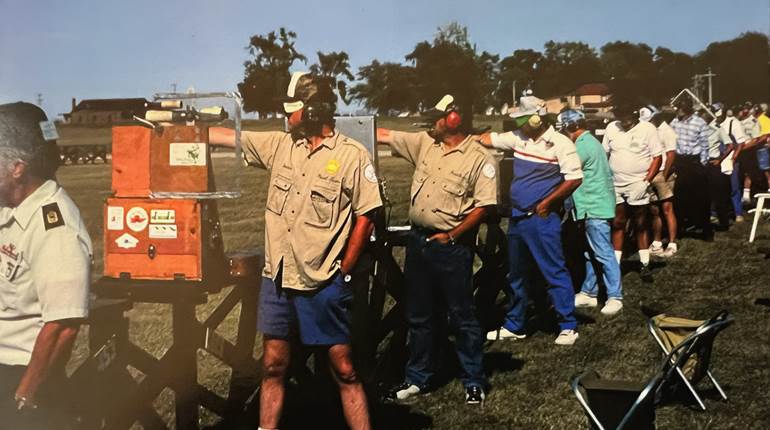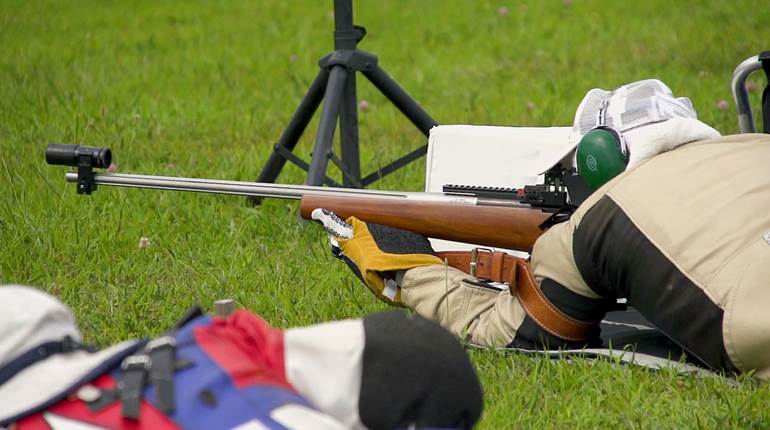By the summer of 1918, German forces on the Western Front were stronger than at any point prior during World War I. This was due to the fact that the Russians sought a separate peace from the other allies. With the Eastern Front closed, the Germans were no longer in the draining position of fighting a two-front war.
As a result, the Germans poured all of their available resources and men into fighting the remaining allies on the Western Front. Beginning on March 21, 1918, the German launched the "Spring Offensive," or a series of attacks and advances along the Western Front. With the temporary numerical advantage the Germans had over the allies, they began to push towards Paris.

After a steady advance, in June, the German offensive ran into the U.S. Army 2nd Infantry Division on the road running from Paris to Metz. Attached to the 2nd Infantry Division were elements of the 5th and 6th Marine Regiments. The Marines were sent forward between June 1 to 26, 1918, in a series of engagements to counter the German advance.
These engagements took place near areas know as "The Triangle Farm," Hill 142 and Belleau Wood. The battle fought by the Marines at Belleau Wood would help forge the legacy and ethos of the U.S. Marine Corps that is revered to this day. At stake was France itself, as Belleau Wood was only 35 miles from Paris, which was already under bombardment from German long-range artillery. If the Germans were able to take Paris, France would fall and along with it the allied war effort.

The Marine riflemen of the time were expert marksmen, and their skill was displayed through German casualties. The Germans were unpleasantly surprised at the capabilities of Marine long-range marksmanship, which was something they had not experienced on such a scale prior in the war. Marksmanship wasn't always a strong point for American infantry however. Prior to 1871, marksmanship was not a priority for the U.S. military and most soldiers only knew the basics on how to aim and operate their arms.
It wasn't until the establishment of the National Rifle Association and national matches, along with National Guard and civilian interest in long-range precision rifle fire, that the values of marksmanship were adopted by the regular army. Where the army and other branches of the military had previously overlooked marksmanship, the involvement of the NRA and embarrassing results of the Spanish-American War pushed the need for improved training.

By the time that the United States entered World War I, many American soldiers were skilled marksmen who were very capable at range with their rifles. The Marines in particular had established a reputation as accurate shooters in competitions like those held at Camp Perry. A the time, the standard service rifle for the United States was the Model 1903 Springfield bolt-action rifle chambered in .30-'06 Sprg. The M1903 was based off the sturdy Mauser 1898 action, and was also known for its accuracy potential. The M1903 has an adjustable rear peep sight that, while not ideal for a battle sight, is excellent for pinpoint shooting.
The other rifle used during the war was the Model 1917 Enfield bolt-action rifle produced by Eddystone, Winchester and Remington. Originally, it was designed by the British as the Pattern 14 chambered in .303 British, intended to be a replacement for the Short Lee Enfield. It was produced under contract by American manufacturers for the British up to America's entry into the war. However, there were too few M1903 rifle available to issue to the American Expeditionary Force, so the design was altered to .30-'06 Sprg. as a means of getting enough service rifles.

Despite being issued domestically manufactured rifles, the machine guns issued to the Marines fighting were foreign made. This included the French M1914 Hotchkiss heavy and M1915 Chauchat CSRG light machine gun chambered in 8 mm Lebel. The U.S. military had overlooked machine guns as a priority prior to joining the war, and production of domestic models was far behind. Thus American soldiers turned to foreign examples to supplement their need for automatic weapons.
The Marines also packed some of the largest caliber handguns issued on the Western Front. These were the semi-automatic, Browning-designed M1911 handgun along with the Smith & Wesson M1917 double-action revolver, both chambered in .45 ACP. These sidearms were more suited for close quarters fighting than the bolt-action rifles, and there were several incidents where these sidearms proved invaluable in the hands of American soldiers.

When Marines first charged across the wheat fields into Belleau Wood, they suffered heavy casualties. They advanced in their traditional line formations against the German positions in the woods, which were reinforced with machine guns. These German positions were set up to cover one another throughout the woods, to where one position would open up when another fell. Despite the losses, the Marines persisted their attack and subdued the German machine gun nests one by one. The Marines engaged in intense fighting against German forces at Belleau Wood for a month.
By the end of the battle on June 26, 1918, the Germans were pushed out of Belleau Woood and were unable to advance any further. Two regiments of Marines succeeded in not only taking on six German Divisions in the process, but playing a key roll in halting the German "Spring Offensive" of 1918. As a result, the Marines not only gained the respect of their French allies in the battle, but gained the same from the Germans. Marine Corps lore grew from the battle with the term of "teufelshunde" or "devil dogs" that was, according to myth, a nickname for the Marines used by the Germans.
To watch complete segments of past episodes of American Rifleman TV, go to americanrifleman.org/artv. For all-new episodes of ARTV, tune in Wednesday nights to Outdoor Channel 8:30 p.m. and 11:30 p.m. EST.


























